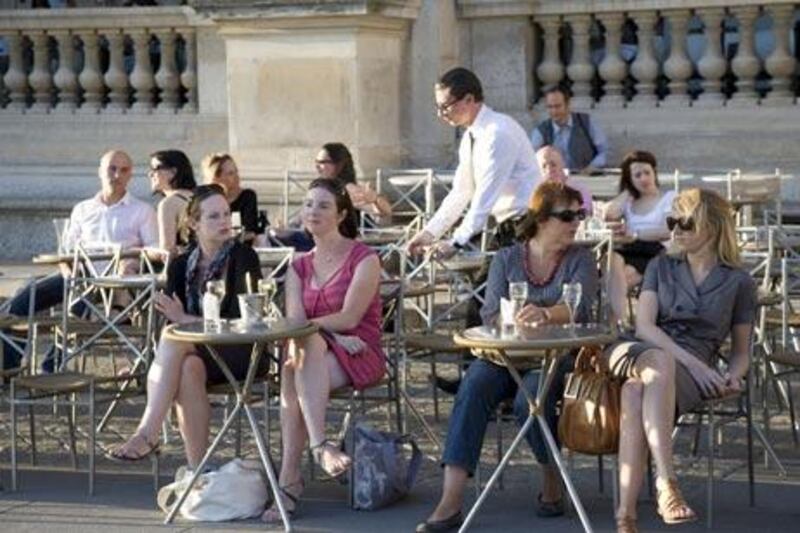The artistic community of France is fond of working itself into a cultural froth worthy of a Starbucks frappuccino, whether attempting to protect the purity of its language or railing against the export of the Louvre gallery to Abu Dhabi. The chocolate sprinkled on the top, though, is the recent revelation that a McDonald's will soon be opening in the Carrousel du Louvre, the underground atrium that leads to the entrance of the capital's historic museum and art gallery. Because while every bistro menu in Paris contains a "steak haché" for 15 euros, the simple act of putting a beef patty on a bun, adding ketchup and wrapping it in paper, to be eaten by hand, and charging a mere seven euros for it, is considered sacrilege. France, after all, is the home of escargots and Escoffier, haute cuisine and nouvelle cuisine. For one of its most popular restaurants to be an American fast-food chain (this will be the 1,142nd outlet in France) is seen as a sign of the country's weakening national identity. And for such a den of iniquity to be placed next to the jewel in Paris's cultural crown is, apparently, shameful in the extreme.
"McDo", as it is called in France, certainly has a chequered 30-year history there: one radical farmer, José Bové, even dismantled an under-construction branch in 1999, in protest against American imperialism and "la malbouffe" - bad food, in other words, one of the greatest crimes in French eyes. Of course, the French farmers do love a protest, but one can't help admiring the sentiment. As obesity in France rises along with the taste for fast food, a return to the staples that kept the French paradox in play (an incredibly rich diet of meat, butter and cheese somehow equals slender Parisians) should surely be on the cards.
The problem is, the formerly airy and lovely Carrousel du Louvre is already home to a quite horrible selection of self-service, fast-food restaurants in its dark, sweaty food court. In this context, the addition of a McDonald's is hardly worth worrying about any more than the opening of a Starbucks at the Allée du Grand Louvre, which also managed to cause a furore. If something is to be blamed for the growth of cheap, speedy food, try the fact that a traditional bistro or a chic cafe elsewhere in the Louvre charges 13 euros for a croque-monsieur (that's cheese on toast to you and me) with a side order of surly waiter that is particularly hard to swallow. As a general rule in Paris, the closer to a tourist attraction the bistro, the staler the bread, the more condescending the staff and the more expensive the Orangina.
The most interesting aspect of the row, though, is the fact that the traditional French xenophobia has reared its head on both sides. For the protesters, it is the epitome of awful American food. For the apologists, meanwhile, it is the epitome of good American food: it will apparently be the American representative in a new food court filled with other world cuisines. The point, then, is that even the well-meaning French apparently believe that McDonald's is the apotheosis of American cooking. Now certainly the fries have a crispy charm and the relish is pleasingly tangy once in a while. But what about Louisiana gumbo? Or short ribs? Or Californian fusion? Or New Mexican tortillas? The American model of cooking sees the best in other cultures and cuisines, as the success of the legendary Francophile American food writer Julia Child shows. The French model sees and turns its nose up at the worst: British boiled cabbage and American fast food.
Many of France's intellectuals were just as horrified by the decision to market Brand Louvre beyond Paris, creating the Louvre Abu Dhabi. But is the Louvre itself really such a bastion of Gallic purity? After all, Francis I of France, the 16th-century king who began the patronage of the arts that gave rise to the collection now in the Louvre, was a very international monarch. His alliance with the Ottoman emperor Suleiman the Magnificent, for example, showed an early affinity with the Islamic world; and he funded several expeditions to the New World, so he was far from anti-American. The art he collected, too, tended to be Italian rather than French, which might explain the prevalence of paintings of that favourite Renaissance subject, fat babies, in the collection.
And subtlety wasn't exactly Francis's trademark: when he and England's Henry VIII tried to impress one another in an explosion of opulence at the Field of the Cloth of Gold in 1520, things reportedly went bad when Francis embarrassed Henry by beating him in a wrestling match. If the culturists think they've got it bad with McDonald's, just wait till they start staging WWF in the Jardins des Tuileries.





